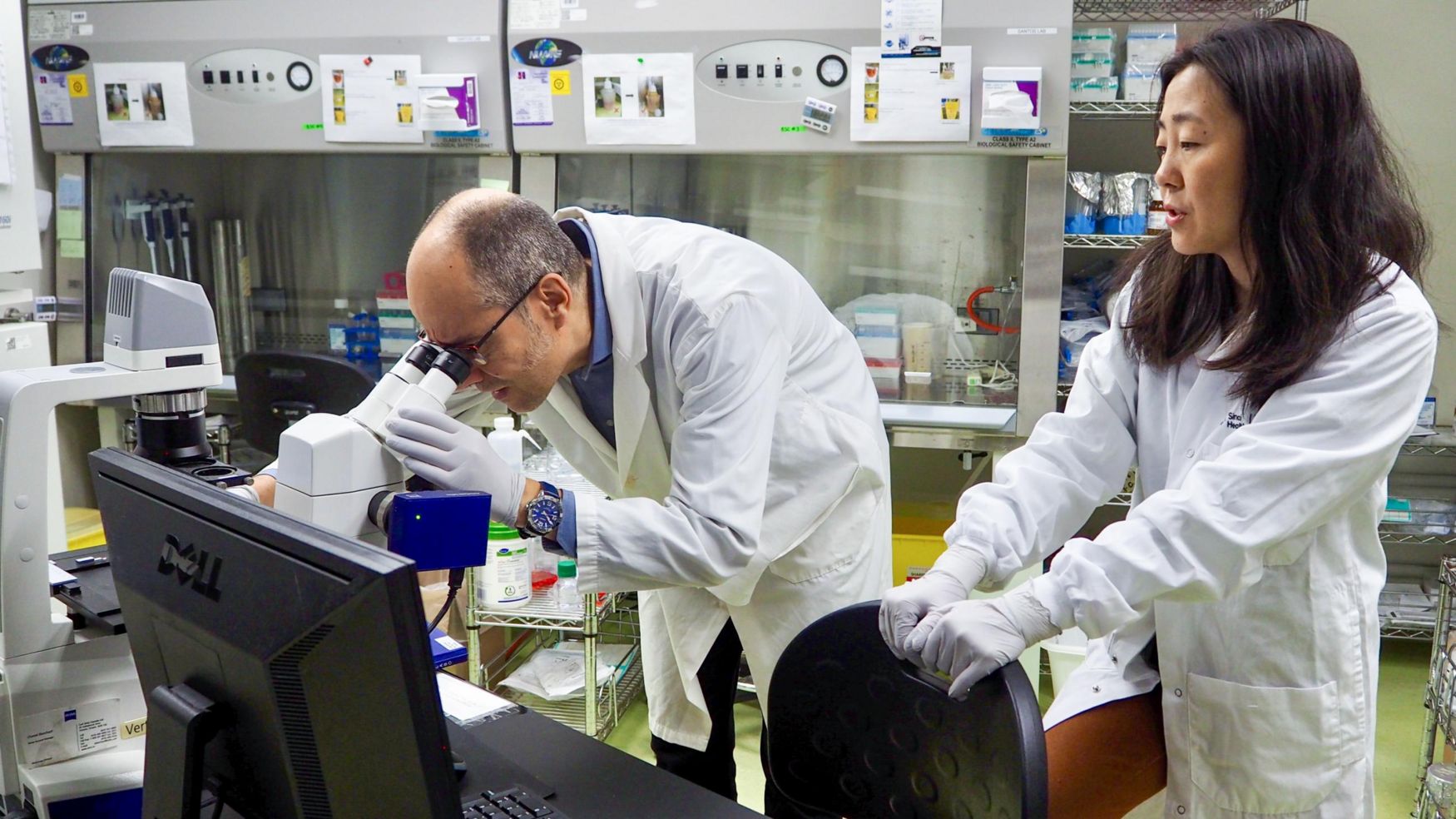
This article was first published on Sinai Health's news page on October 15, 2024.
A critical transition in early human development is regulated not by our own genes, but by DNA elements called transposons that can move around the genome, researchers at Sinai Health and the University of Toronto have found.
Their remarkable discovery challenges our previous understanding of these elusive DNA segments, shedding new light on the roles they play in human development and disease.
“People tend to think of transposons as akin to viruses where they hijack our cells for the sole purpose of propagating themselves,” said the study’s senior co-author Miguel Ramalho-Santos, a senior investigator at Sinai Health’s Lunenfeld-Tanenbaum Research Institute (LTRI) and a professor of the Department of Molecular Genetics at U of T’s Temerty Faculty of Medicine
“But here we have discovered that these elements are not mere genomic parasites but are essential for early development,” said Ramalho-Santos, who holds the Canada 150 Research Chair in Developmental Epigenetics.
The study, published in the journal Developmental Cell, indicates that transposable elements are critical to ensure that human embryonic cells progress normally through early development, rather than going backward.
The researchers focussed on the transposable elements known as LINE-1, for long interspersed nuclear element-1. Unlike our own genes, which compose less than two per cent of our genome, the LINE-1elements comprise a staggering 20 per cent of the genetic material in our cells.
Some of LINE-1 elements can amplify and move around the genome, inserting themselves in new locations. Because they spread of their own accord in a way that can disrupt normal gene functions, they have earned the moniker ‘selfish DNA.’
For years, scientists believed these elements were mostly harmful, occasionally wreaking havoc in the genome and contributing to a variety of diseases, from hemophilia to neurological disorders and cancer.
Juan Zhang, a senior co-author on the study and postdoctoral fellow who spearheaded the research, initially found it intriguing that LINE-1 RNA messages are abundant in the early embryo. RNA message molecules are transcribed from parts of the genome that are active, indicating that LINE-1 elements are switched on in these critical early stages.
“If transposons are bad and dangerous, why do we see them active in the early embryo? This is an embryo that's just beginning its formation. Any dangerous insertion into the genome at this point is going to be propagated throughout the rest of the development of the individual,” said Zhang.
When Zhang inhibited LINE-1 expression in cultured human embryonic stem cells (ESCs), a reversal occurred, taking them back to the more primitive 8-cell stage. At this point, each of the eight cells is identical and totipotent, capable of developing into both the embryo and placenta.
Beyond this stage, while ESCs can still form all fetal cells, they become less and less able to contribute to the placenta (through which the embryo receives nutrients from the mother).
Further experiments showed that these LINE-1 message molecules act as a scaffold to organize the DNA in the three-dimensional space of the cell’s nucleus. They help move chromosome 19 — home to crucial genes for the 8-cell stage — to a gene-silencing region of the nucleus, ensuring the embryo can progress to subsequent stages without a glitch.
“We show that LINE-1 regulates gene expression at a crucial turning point where the embryo starts to specialize its cells for various functions. Our results indicate that this is not an accidental occurrence but a vital evolutionary mechanism,” said Zhang.
Adding to the surprises, this new role of LINE-1 elements deviates from their typical behaviour of jumping to new genomic locations and thereby causing potentially harmful mutations. Instead, in this critical context, LINE-1 elements exclusively foster developmental progression, a unique action that underscores their importance in early human growth.
This fundamental research has important implications for fertility treatments and the use of stem cells in regenerative medicine. Moreover, the work unveils novel roles for LINE1 that can now be explored in the disease contexts where it has been implicated, from neurological disorders to cancer.
Anne-Claude Gingras, director of LTRI and vice president of research for Sinai Health, said the research underscores how much more there is to learn about human development and about transposable and other genome elements whose roles are only beginning to emerge
“I congratulate my colleagues on breaking new ground with this fascinating insight into human biology," said Gringras, who is also a professor of molecular genetics at Temerty Medicine. "I eagerly anticipate further discoveries as they continue their work.”
The research was supported by the Canadian Institutes for Health Research, the Great Gulf Homes Charitable Foundation and Medicine by Design at the University of Toronto.